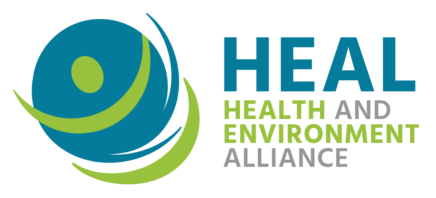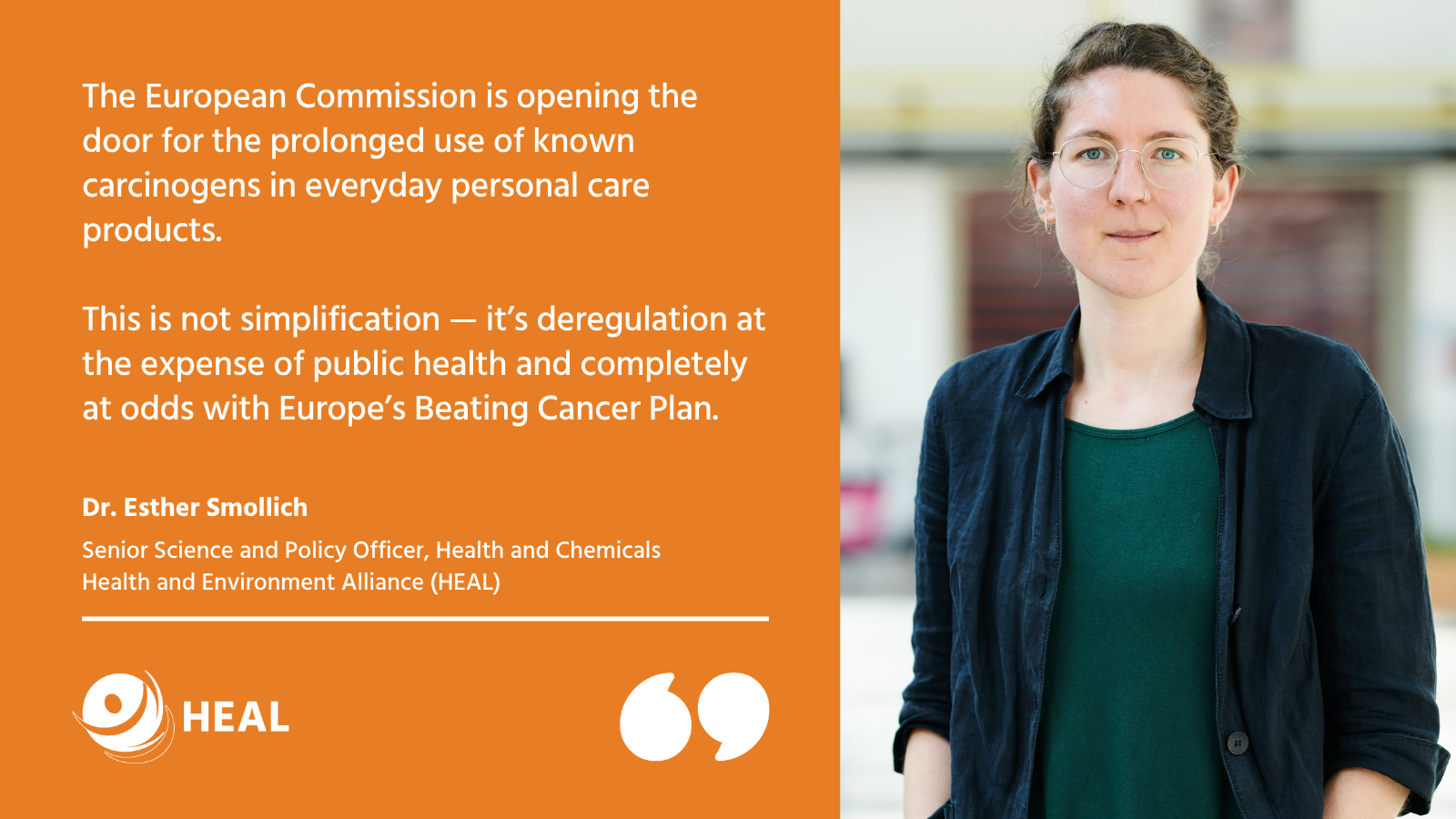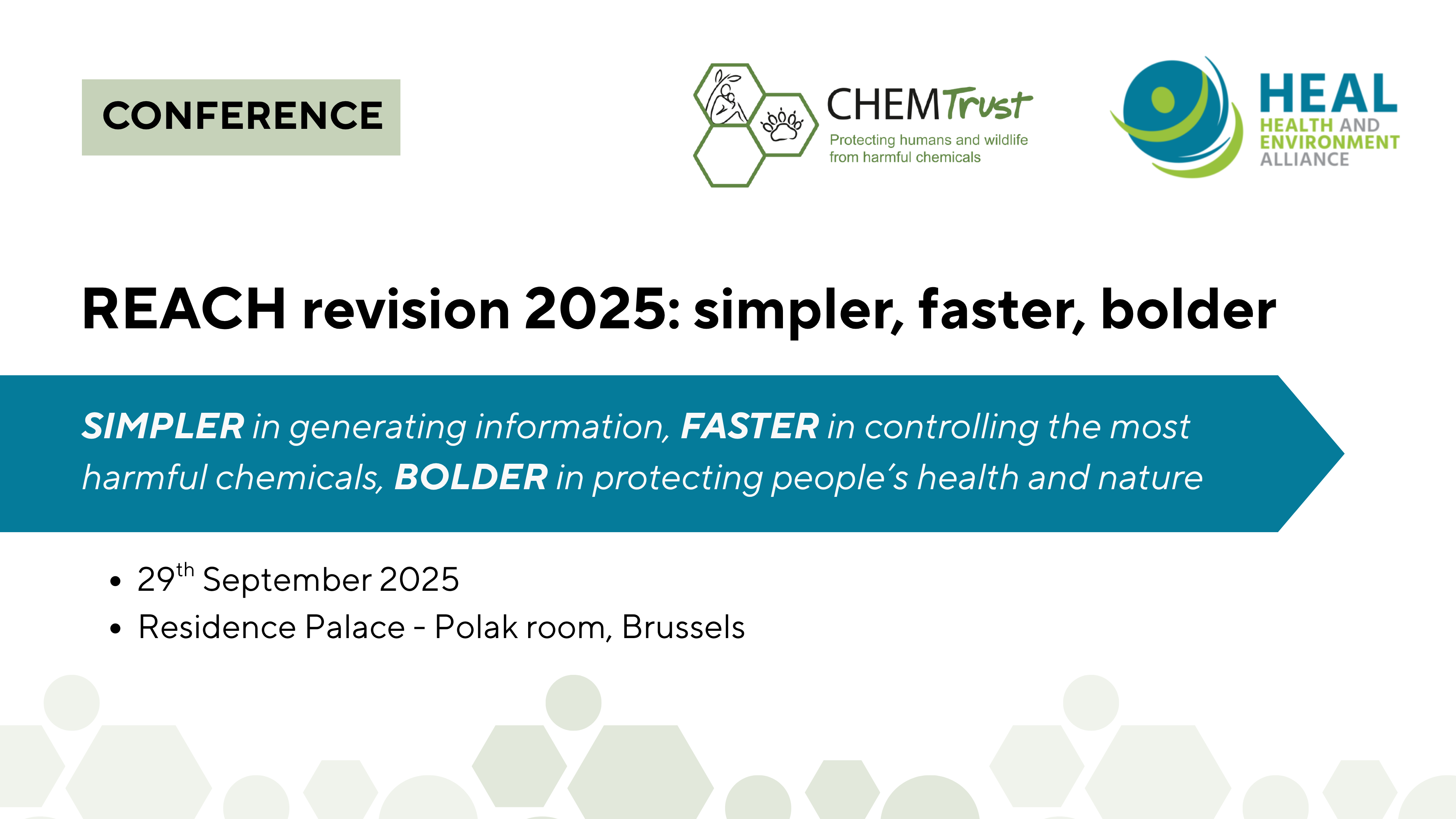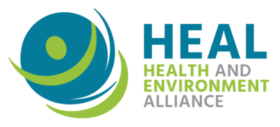Today’s publication of the European Commission’s chemicals omnibus confirms serious concerns: if pushed through the proposal will significantly weaken protections in the Cosmetic Products Regulation, allowing the prolonged use of carcinogens and other harmful chemicals in personal care products.
Melamine’s potential irreversible impacts on human health and the environment warrant regulatory action now. This is why HEAL supports Germany’s proposal to identify melamine as a substance of very high concern (SVHC) under REACH – essentially placing it on the black list of hazardous chemicals prioritised to be phased out of use on the EU market.
Here are six things you need to know about this potentially harmful chemical.
Melamine is found in many products we use on a daily basis
Melamine is increasingly being used in a diverse array of industrial and consumer products and is produced and imported in large quantities to the EU. It is often found in:
- Building materials (including flooring walls, plywood, adhesives, paints and coatings)
- Materials with flame retardants
- Reusable and single use plastic tableware and and other food contact materials including bamboo cups, cutting boards, can linings, jar lids, chopsticks, ramen noodle bowls and childrens’ dinnerware
- Stain and water resistant textiles and clothing
- Personal care products (including cosmetics like makeup and hair dye)
- Leather treatment products
- Detergents
- Fragrances
- Electrical and household appliances
- Children’s toys
We are exposed to melamine through many different routes
We are primarily exposed to melamine through its migration from plastic tableware and other food contact materials, contaminating the food we eat [1]. In addition, industry is selling popular products such as bamboo tableware containing melamine under the auspices of a more sustainable, safer alternative material when in fact it’s simply more plastic. People are also exposed to sources of melamine from contaminated drinking water, house dust, milk, infant formula, and breast milk [2] [3] [4].
Children are particularly at risk of exposure to melamine, which is often used in children’s plastic tableware due to its durability [5]. Children drink more water and breathe more air per body weight than adults, potentially further exposing them to higher concentrations of melamine via water and food consumption and dust inhalation, in addition to increased hand-to-mouth behaviours. As a result, children may be at greater risk of increased cumulative exposure during this developmentally and biologically vulnerable stage. Indeed, recent studies have found higher levels of melamine and its derivatives in the urine of young children compared to their adult counterparts [6].
What’s more, exposure to melamine in combination with other harmful chemicals that are often used together (such as formaldehyde, cyanuric acid, and so on) adds to the chemical cocktail that we are subjected to on a daily basis. Melamine is also increasingly being used in lieu of other hazardous substances that are harmful to human health and the environment, specifically PFAS, which further perpetuates a cycle of regrettable substitution [7].
Melamine impacts human health
There are many potential adverse health effects associated with melamine exposure, the harm of which could irreversibly impact future generations and vulnerable populations, most notably infants and young children. The list of known associated health effects include:
- Carcinogenicity: In 2019, the International Agency for Research on Cancer (IARC) classified melamine as a substance that is “possibly carcinogenic to humans.” The European Chemicals Agency (ECHA) also categorised it as a suspected carcinogen under the CLP regulation [8].
- Reprotoxicity: The Globally Harmonised System of Classification and Labelling of Chemicals (GHS) issued a warning that melamine is suspected of damaging fertility or the developing foetus [9].
- Suspected endocrine disruption: ECHA is also currently assessing melamine as a suspected endocrine disrupting chemical (EDC) and up-to-date science provides evidence of hormonal disruption [10].
- Neurotoxicity: A scoping review of the science looked at more than 40 human, animal, and in vitro studies investigating melamine exposure and identified associated neurological impacts [11].
- Kidney disorders: In 2020, the European Chemicals Agency’s Committee for Risk Assessment (RAC) classified melamine as a substance that has specific toxic effects on the kidney after prolonged or repeated exposures [12]. In 2008 real life, acute melamine exposures from intentionally adulterated infant formula resulted in diagnosis of kidney stones in 294,000 infants, approximately 50,000 infant hospitalisations, and at least 6 deaths from kidney failure [13].
Melamine pollutes the environment
Melamine is very persistent and mobile in the environment, especially in aquatic environments due to its intrinsic properties [14]. As such, conventional water treatment methods are ineffective at removing it, allowing melamine to increasingly accumulate in waterways far from where it was originally emitted.
Monitoring studies around the world are increasingly finding melamine in surface water, groundwater, and rainwater far from point sources of contamination [15] [16] [17]. Adverse effects linked to acute and chronic exposure to melamine have been observed in aquatic and terrestrial organisms suggesting further impacts throughout the food chain [18] [19] [20]. As a result, increasing production, use, and disposal of melamine has the potential for long-lasting, irreversible global impacts on the environment.
Safer substitutes are readily available
There are plenty of safer substitutes on the market, which have all the durability and kid-friendly qualities needed without the adverse health or environmental impacts. Stainless steel, tempered glass, ceramic, silicone, and enamelled dishware are just some alternatives that can easily replace kitchenware and tableware containing melamine.
One community in Limoges, France has done just this by replacing kids’ melamine dishware with safer porcelain trays. In 2018 the city council partnered with local industry to design and deploy non-toxic, light, durable porcelain trays made for young children.
If you want to use bamboo cups, cutlery or containers, make sure to take a look at the material list of the product at hand before purchasing it. Oftentimes, an item is listed as BPA-, phthalate-, or PVC-free, but melamine is still lurking. Until we get effective policy in place through REACH, keeping an eye out for this harmful ingredient and reducing use where possible is key.
Identifying melamine as a substance of very high concern under REACH can help minimise harmful exposures and environmental contamination
Europe’s listing of substances of very high concern (SVHC) can be described as a black list for chemicals that are highly toxic to health and/or the environment and are meant to be phased out from the market over the mid- to long-term. In other words, SVHC listing is the first step towards a phase out through the REACH authorisation system.
Once a SVHC moves to the authorisation list, companies that want to keep using it have to request a specific authorisation for a specific use in order to continue placing it on the market. Despite loopholes in the current system, the authorisation is meant to support substitution towards safer alternatives, one of the founding principles behind the REACH regulation.
HEAL is strongly in favour of the German proposal to better protect health and the environment by identifying melamine as a SVHC under REACH and calls on other European authorities to support it. It is now for the ECHA Member State Committee to decide whether melamine meets the criteria for a SVHC during its December meeting (tentatively scheduled for the week of 12 December 2022).



